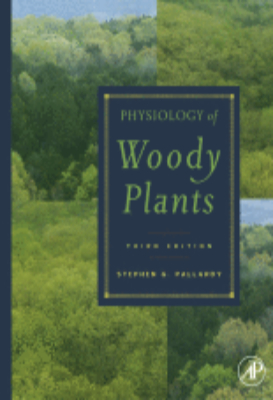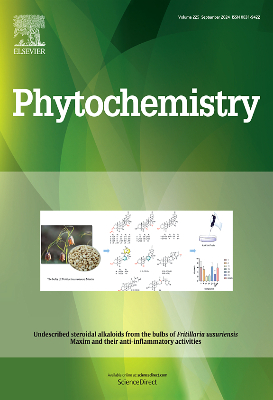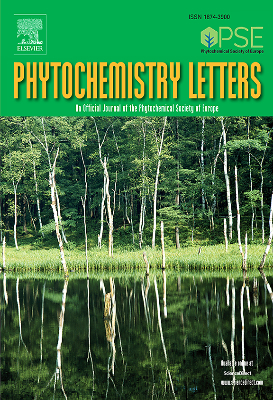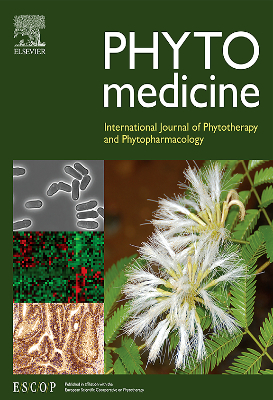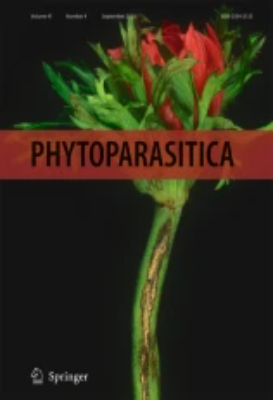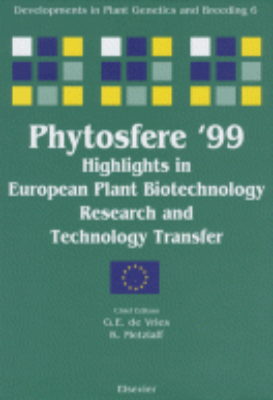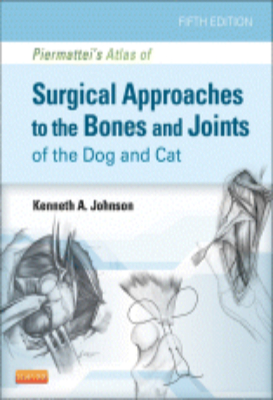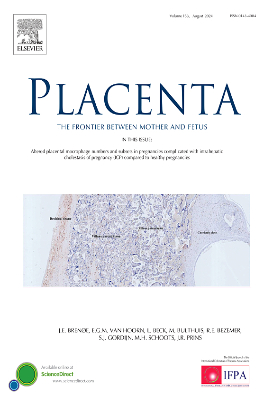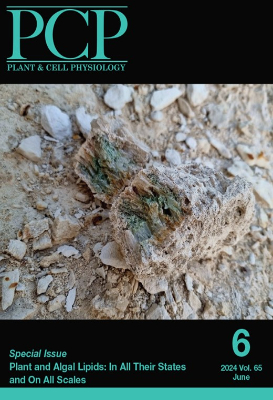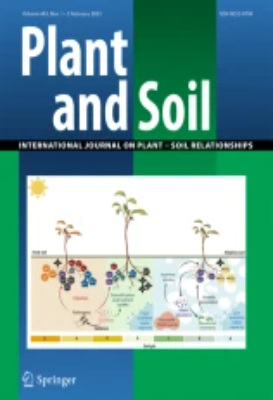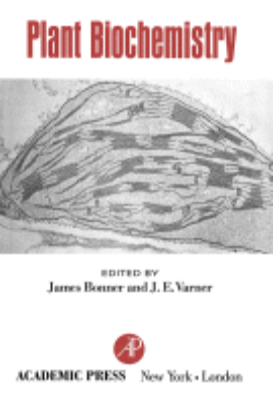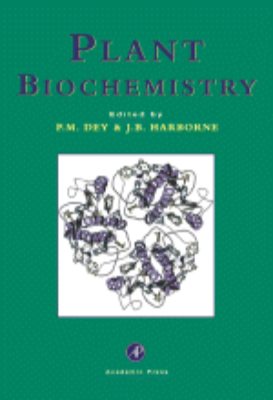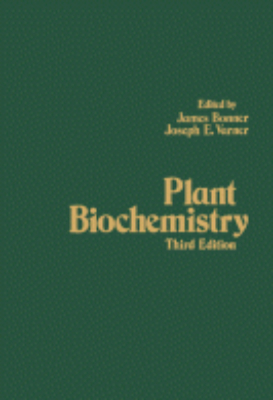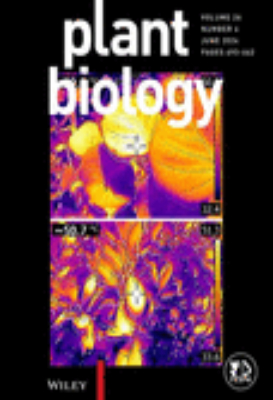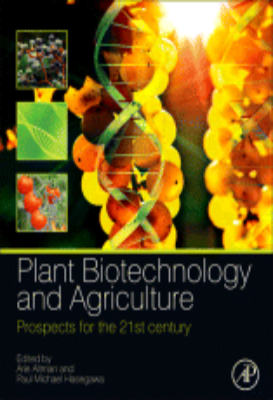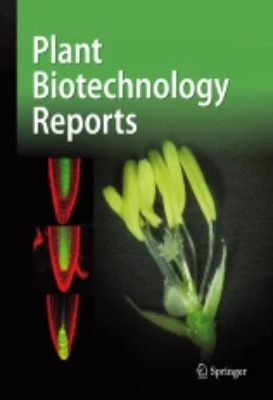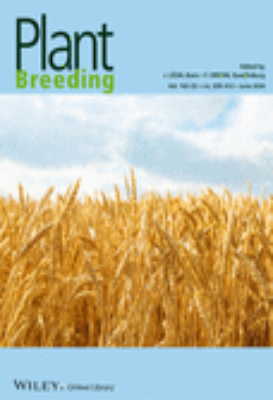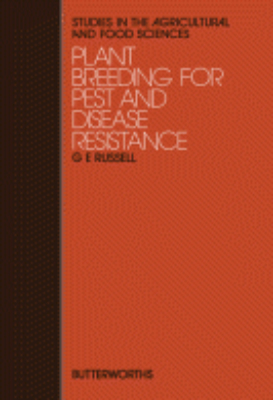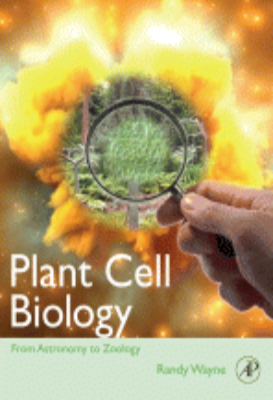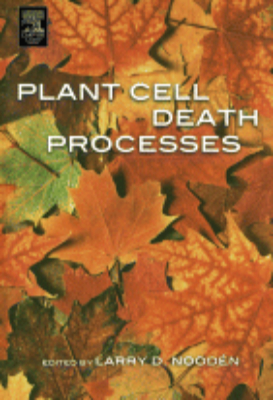E-Resources
Physiology of Woody Plants: 2008
“Woody plants such as trees have a significant economic and climatic influence on global economies and ecologies. This completely revised classic book is an up-to-date synthesis of the intensive research devoted to woody plants published in the second edition, with additional important aspects from the authors’ previous book, Growth Control in Woody Plants. Intended primarily as a reference for researchers, the interdisciplinary nature of the book makes it useful to a broad range of scientists and researchers from agroforesters, agronomists, and arborists to plant pathologists and soil scientists. This third edition provides crutial updates to many chapters, including: responses of plants to elevated CO2; the process and regulation of cambial growth; photoinhibition and photoprotection of photosynthesis; nitrogen metabolism and internal recycling, and more. Revised chapters focus on emerging discoveries of the patterns and processes of woody plant physiology. Key Features. The only book to provide recommendations for the use of specific management practices and experimental procedures and equipment. *Updated coverage of nearly all topics of interest to woody plant physiologists. Extensive revisions of chapters relating to key processes in growth, photosynthesis, and water relations. More than 500 new references. Examples of molecular-level evidence incorporated in discussion of the role of expansion proteins in plant growth; mechanism of ATP production by coupling factor in photosynthesis; the role of cellulose synthase in cell wall construction; structure-function relationships for aquaporin proteins”
Physiology of Woody Plants: Second Edition 1997
This completely revised classic volume is an up-to-date synthesis of the intensive research devoted to woody plants. Intended primarily as a text for students and a reference for researchers, this interdisciplinary book should be useful to a broad range of scientists from agroforesters, agronomists, and arborists to plant pathologists, ecophysiologists, and soil scientists. Anyone interested in plant physiology will find this text invaluable.
Phytochemicals in Plant Cell Cultures
Cell Culture and Somatic Cell Genetics of Plants, Volume 5: Phytochemicals in Plant Cell Cultures provides comprehensive coverage of the wide variety of laboratory procedures used in plant cell culture, fundamental aspects of cell growth and nutrition, and plant regeneration and variability. This book consists of five main topicsphenylpropanoids, naphthoquinones, and anthraquinones; mevalonates; alkaloids; glucosinolates, polyacetylenes, and lipids; and biologically active compounds. This publication specifically discusses the coumarins in crown gall tumors, natural occurrence of bufadienolides, and accumulation of protoberberine alkaloids. The flavor production in tissue cultures of allium species and callus cultures derived from carrot root explants is also reviewed. This volume is valuable to experienced researchers and those newly entering the field of plant cell and tissue culture.
Piermattei’s Atlas of Surgical Approaches to the Bones and Joints of the Dog and Cat
This expertly illustrated atlas has been the go-to reference in veterinary orthopedic surgery for nearly 50 years and remains the premier resource for small animal surgical procedures. As in prior editions, Piermattei’s Atlas of Surgical Approaches to the Bones and Joints of the Dog and Cat, 5th Edition is teeming with highly detailed drawings that illustrate a wide range of surgical approaches. This edition also features six all new surgical approaches and three approaches which have been expanded to illustrate the modifications required when performing orthopedic surgery on the cat. In addition to updated images throughout, fifty-five brand new illustrations accompany the new surgical approaches. As many will attest, Piermatteis Atlas is an invaluable reference that no small animal surgeon should be without. “In summary, if you still dont have a previous edition of Piermatteis atlas of surgical approaches to the bones and joints of the dog and cat on your bookshelves, this is a must have. If you already have a previous edition, the difference between the 4th and 5th are not big, but there are a few additions that will still make it a worthwhile buy.” Reviewed by: Benito De La Puerta, Ldo, Cert SAS Dip ECVS, UK Date: July 2014
Planning and Designing Research Animal Facilities
“Research institutions have or are planning to build, expand and renovate animal research facilities to keep up with the demands of biomedical research caused in part by growth in the use of genetically altered rodents and the upsurge of research in infectious diseases. Properly designed facilities greatly facilitate effective management and high-quality day-to-day animal care that is required to optimally support animal research and testing. There are multiple solutions to address the myriad of factors that influence the design and construction of animal research facilities. There is no best design applicable for all facilities and arguably not even a single best design for a given facility. For this reason, Planning and Designing Research Animal Facilities is not intended to be a how to book. The goal is to cover the basic programmatic requirements of animal research facilities, provide ideas for meeting those requirements while, hopefully, stimulating the creative process in which designers in consultation with those who work in animal research facilities generate even better ideas. That is how progress has been made and will continue to be made. Key Features. Facilitates communication between the parties involved in planning and designing animal facilities by providing contemporary information, and stimulating creativity that will help lead to wise decisions and advance the knowledge base for planning, design and constructing animal research facilities”
Plant and Bacterial Viruses
The Viruses: Biochemical, Biological, and Biophysical Properties, Volume 2: Plant and Bacterial Viruses deals with the biochemistry, biology, and biophysics of plant viruses. The viruses considered are tobacco and turnip yellow mosaic viruses; tobacco ringspot virus; potato virus X; and bacterial viruses, such as lysogenic bacteria and phages. This volume is organized into 10 chapters and begins with a discussion of the tobacco mosaic virus and other plant viruses, emphasizing the process of infection and synthesis and general features of the host-virus system. The next chapters focus on the purification and protein components of plant viruses; the chemical correlates of biological variability in viruses; and biological cycles of plant viruses in insect vectors. This book describes the bacteriophage, which is considered as a model virus in comparison with typical microorganisms and cellular organelles. It also introduces the reader to the kinetics of phage reproduction; the intracellular multiplication of bacterial viruses; and the process of lysogeny in bacteria. The book concludes with a chapter on irradiation of phage with ultraviolet light, decay of incorporated radiophosphorus (“”suicide””), and ionizing radiation (usually X-rays). Biologists, botanists, biochemists, biophysicists, and microbial physiologists will find this book a rich source of information on plant and bacterial viruses.
Plant Biochemistry, 3rd ed.
“This fully revised translation of the world-renowned German edition covers the complete and modern knowledge of plant biochemistry. The book presents the topic in a concise and simplified manner so that students can digest the message and gain a basic knowledge of the entire field of plant biochemistry, from photosynthesis (the synthesis of natural plant products) to all kinds of genetic engineering with its many commercial applications. Topics include cell structure and function, lipid and polysaccharide metabolism, nitrogen fixation, phloem transport, synthesis and function of isoprenoids, phenylpropanoids and other secondary metabolites, plant growth regulation and development. Heldt provides a comprehensive description of photosynthesis, primary and secondary metabolism, the function of phytohormones and molecular engineering. The text covers research findings until the end of 2003 and identifies areas of future research. There are extensive references to the most recent scientific literature. Key Features. Illustrated with two-color diagrams and well designed metabolic schemes. Plant metabolism presented in the context of the structure and function of the plant. Many examples of commercial applications for the protection and quality improvement of harvest crops, plant breeding, and the production of raw materials for industrial use. Coverage of the latest research findings”
Plant Biochemistry: 1965
Plant Biochemistry focuses on the biological processes involved in plants, particularly noting metabolism, electron transport, biogenesis, and germination. The manuscript first offers information on the substructures and subfunctions of plant cell, including cell and subcell, enzymes, ribosomes, nucleus, cellular membranes, mitochondria and electron transport, chloroplast, and the substructure and function of the cell wall. The text then elaborates on basic metabolism. Enzymology, the path of carbon in respiratory metabolism, mono- and oligosaccharides, starch, insulin, and other reserve polysaccharides, and the biogenesis of the cell wall are discussed. The publication explains plant metabolism and control. Discussions focus on plant acids, alkaloid biogenesis, coumarins, phenylpropanes, and lignin, ethylene and polyacetylenes, steroids, and seed development and germination. The book is a valuable source of information for students or professional workers in the plant sciences.
Plant Biochemistry: 1997
“Plant Biochemistry provides students and researchers in plant sciences with a concise general account of plant biochemistry. The edited format allows recognized experts in plant biochemistry to contribute chapters on their special topics. Up-to-date surveys are divided into four sections: the cell, primary metabolism, special metabolism, and the plant and the environment. There is a strong emphasis on plant metabolism as well as enzymological, methodological, molecular, biological, functional, and regulatory aspects of plant biochemistry. Illustrations of metabolic pathways are used extensively, and further reading lists are also included. Key Features The coverage of the subject is divided into four sections. The plant cell-describing both molecular components and function. Primary metabolism-including the pathways of carbohydrate, lipid, nitrogen, nucleic acid and protein metabolism as well as gene regulation. Special metabolism-chapters on phenolics, isoprenoids and secondary nitrogen compounds. The plant and the environment-discussions of pathology, ecology and biotechnology at the molecular level”
Plant Biochemistry: Fourth Edition 2011
“The fully revised and expanded fourth edition of Plant Biochemistry presents the latest science on the molecular mechanisms of plant life. The book not only covers the basic principles of plant biology, such as photosynthesis, primary and secondary metabolism, the function of phytohormones, plant genetics, and plant biotechnology, but it also addresses the various commercial applications of plant biochemistry. Plant biochemistry is not only an important field of basic science explaining the molecular function of a plant, but is also an applied science that is in the position to contribute to the solution of agricultural and pharmaceutical problems. Plants are the source of important industrial raw material such as fat and starch but they are also the basis for the production of pharmaceutics. It is expected that in the future, gene technology will lead to the extensive use of plants as a means of producing sustainable raw material for industrial purposes. As such, the techniques and use of genetic engineering to improve crop plants and to provide sustainable raw materials for the chemical and pharmaceutical industries are described in this edition. The latest research findings have been included, and areas of future research are identified. Key Features. Offers the latest research findings in a concise and understandable manner. Presents plant metabolism in the context of the structure and the function of plants. Includes more than 300 two-color diagrams and metabolic schemes. Covers the various commercial applications of plant biochemistry. Provides extensive references to the recent scientific literature”
Plant Biochemistry: Third Edition 1976
Plant Biochemistry, Third Edition examines the fundamental aspects of plant biochemistry and biology, including taxonomy, morphology, ecology, horticulture, agronomy, and phytopathology. It discusses the substructures and subfunctions of plant cells, the basic metabolism of plants, and the mechanism and regulation as well as physiological significance of various pathways of photosynthetic carbon dioxide assimilation. Comprised of 26 chapters, this edition begins with an overview of the subcellular components of the plant cell, the overall logic or strategy that the cell uses, and the operation of individual subcellular systems. It discusses the plant ribosomes and nuclei, biosynthesis and assembly of cell membranes in plants, distribution and functional roles of microbodies in plants, photosynthesis and the general biology of chloroplasts, and plant microtubules. The remaining chapters focus on the biochemistry and functions of vacuoles, the primary cell wall and its biogenesis, the regulation of enzyme activity in metabolic pathways, the monosaccharides and oligosaccharides, and the lipid metabolism. The book concludes with a chapter on biological nitrogen fixation and its practical applications in agriculture. This book is a valuable resource for biochemists and plant biologists as well as advanced students or professional workers in plant sciences.
Plant Biosystematics
Plant Biosystematics is a compendium of papers from a symposium titled “Plant Biosystematics: Forty Years Later” held in Montreal in July 1983. This collection reviews the current field of biosystematics, particularly the evolution of natural biota, and how plant biosystematics can contribute to the welfare of humans. One paper reviews biosystematics, compares new approaches, and discusses the latest trend in comparative, molecular evolution of genes. One author discusses the cytology and biosystematics concerning the discontinuities and genetic independence occurring in the evolutionary process. Another author discusses chromosome pairing in species and hybrids that includes models of chromosome pairing in diploids. The text also describes chromosome banding and biosystematics, as well as the problems of chromosome banding that should be addressed to in future research. With estimates of the number of species being threatened with extinction numbering around 20,000 one paper address the issue of conservation and biosystematics. The author suggests that more biological information should be published to avoid duplication of effort, and possibly drive scientists to have their views more widely felt. Agriculturists, botanists, conservationists, environmentalists, and researchers in the field of botany, conservation, and plant genealogy will find this book valuable.
Plant Biotechnology and Agriculture
“As the oldest and largest human intervention in nature, the science of agriculture is one of the most intensely studied practices. From manipulation of plant gene structure to the use of plants for bioenergy, biotechnology interventions in plant and agricultural science have been rapidly developing over the past ten years with immense forward leaps on an annual basis. This book begins by laying the foundations for plant biotechnology by outlining the biological aspects including gene structure and expression, and the basic procedures in plant biotechnology of genomics, metabolomics, transcriptomics and proteomics. It then focuses on a discussion of the impacts of biotechnology on plant breeding technologies and germplasm sustainability. The role of biotechnology in the improvement of agricultural traits, production of industrial products and pharmaceuticals as well as biomaterials and biomass provide a historical perspective and a look to the future. Sections addressing intellectual property rights and sociological and food safety issues round out the holistic discussion of this important topic. Key Features. Includes specific emphasis on the inter-relationships between basic plant biotechnologies and applied agricultural applications, and the way they contribute to each other. Provides an updated review of the major plant biotechnology procedures and techniques, their impact on novel agricultural development and crop plant improvement. Takes a broad view of the topic with discussions of practices in many countries”
Plant Breeding for Pest and Disease Resistance
Studies in the Agricultural and Food Sciences: Plant Breeding for Pest and Disease Resistance presents a critical review of the development of resistant varieties of plant to pests and diseases. It discusses the economic impact of pests and diseases; the methods of controlling these pests and diseases; and the challenges being faced by a plant breeder. Some of the topics covered in the book are the general principles and methods of breeding for resistance; importance of parasite variability to the plant breeder; methods of testing for resistance; requirements for successful inoculation; production of resistant varieties; and economic importance of fungal diseases; and variability in fungal pathogen. Pathogenic fungi and fungal diseases are also covered. The control of fungal diseases by resistant varieties is discussed. An in-depth analysis of diseases in plants is provided. The characteristics of bacteria and bacterial diseases are also presented. A chapter is devoted to epidemiology of diseases associated with mycoplasma-like organisms and rickettsia-like organisms. The book can provide useful information to farmers, botanists, students, and researchers.
Plant Breeding in New Zealand
Plant Breeding in New Zealand is a collection of papers that covers selecting and breeding of crops, pastures, fruits, timbers, and soil conservation plants in New Zealand. The book is divided into four parts, which are dealing with cropping, horticulture, forestry and soil conservation, and pasture. The text first covers crop plants such as wheat, barley, and potatoes. The next part deals with horticulture produce, such as apples, berries, and citrus. Next, the book discusses forestry, soil conservation, and genetic techniques in plant improvement. The last part talks about the plants used in pastures, which include white and red clover, lucerne, and lotus and other legumes. The book will be of great use to botanists, agriculturists, and horticulturists who wish to be aware of the plant selection and breeding methods used in New Zealand.
Plant Cell Biology
“Plant Cell Biology is a semester long course for undergraduates and graduate students which integrates mathematics and physics, two years of chemistry, genetics, biochemistry and evolution disciplines. Having taught this course for over ten years, the author uses his expertise to relate the background established in plant anatomy, plant physiology, plant growth and development, plant taxonomy, plant biochemistry, and plant molecular biology courses to plant cell biology. This integration attempts to break down the barrier so plant cell biology is seen as an entre into higher science.Distinguishing this book from papers that are often used for teaching the subject which use a single plant to demonstrate the techniques of molecular biology, this book covers all aspects of plant cell biology without emphasizing any one plant, organelle, molecule, or technique. Although most examples are biased towards plants, basic similarities between all living eukaryotic cells (animal and plant) are recognized and used to best illustrate for students cell processes. Key Features. Thoroughly explains the physiological underpinnings of biological processes to bring original insight related to plants. Includes examples throughout from physics, chemistry, geology, and biology to bring understanding to plant cell development, growth, chemistry and diseases. Provides the essential tools for students to be able to evaluate and assess the mechanisms involved in cell growth, chromosome motion, membrane trafficking, and energy exchange. Companion Web site provides support for all plant cell biology courses”
Plant Cell Death Processes
Programmed cell death is a common pattern of growth and development in both animals and plants. However, programmed cell death and related processes are not as generally recognized as central to plant growth. This is changing fast and is becoming more of a focus of intensive research. This edited work will bring under one cover recent reviews of programmed cell death, apoptosis and senescence. Key Features Summaries of the myriad aspects of cell death in plants Discussion of the broadest implications of these disparite results A unification of fields where there has been no cross talk Enables easy entry into diverse but related lines of research

